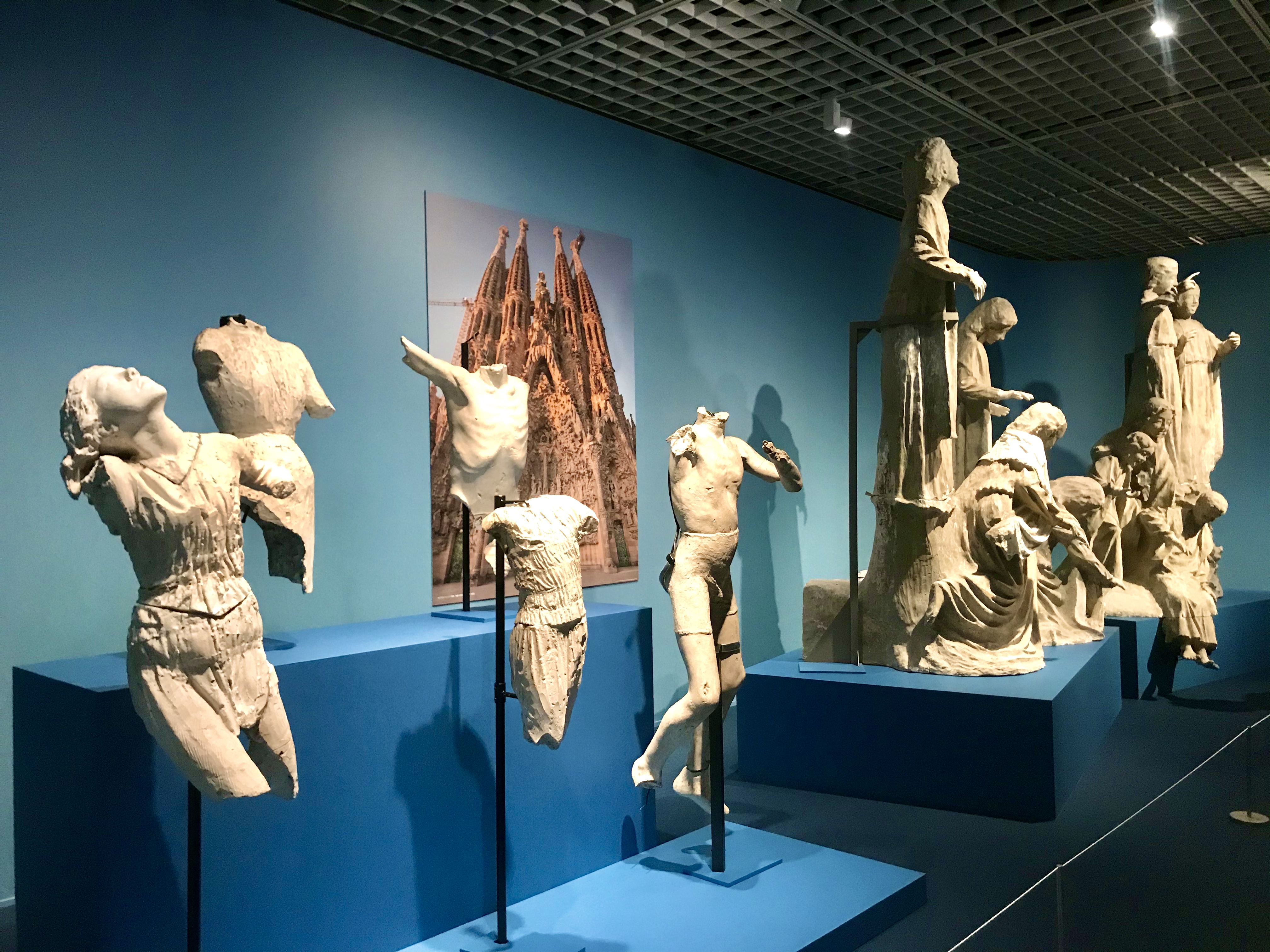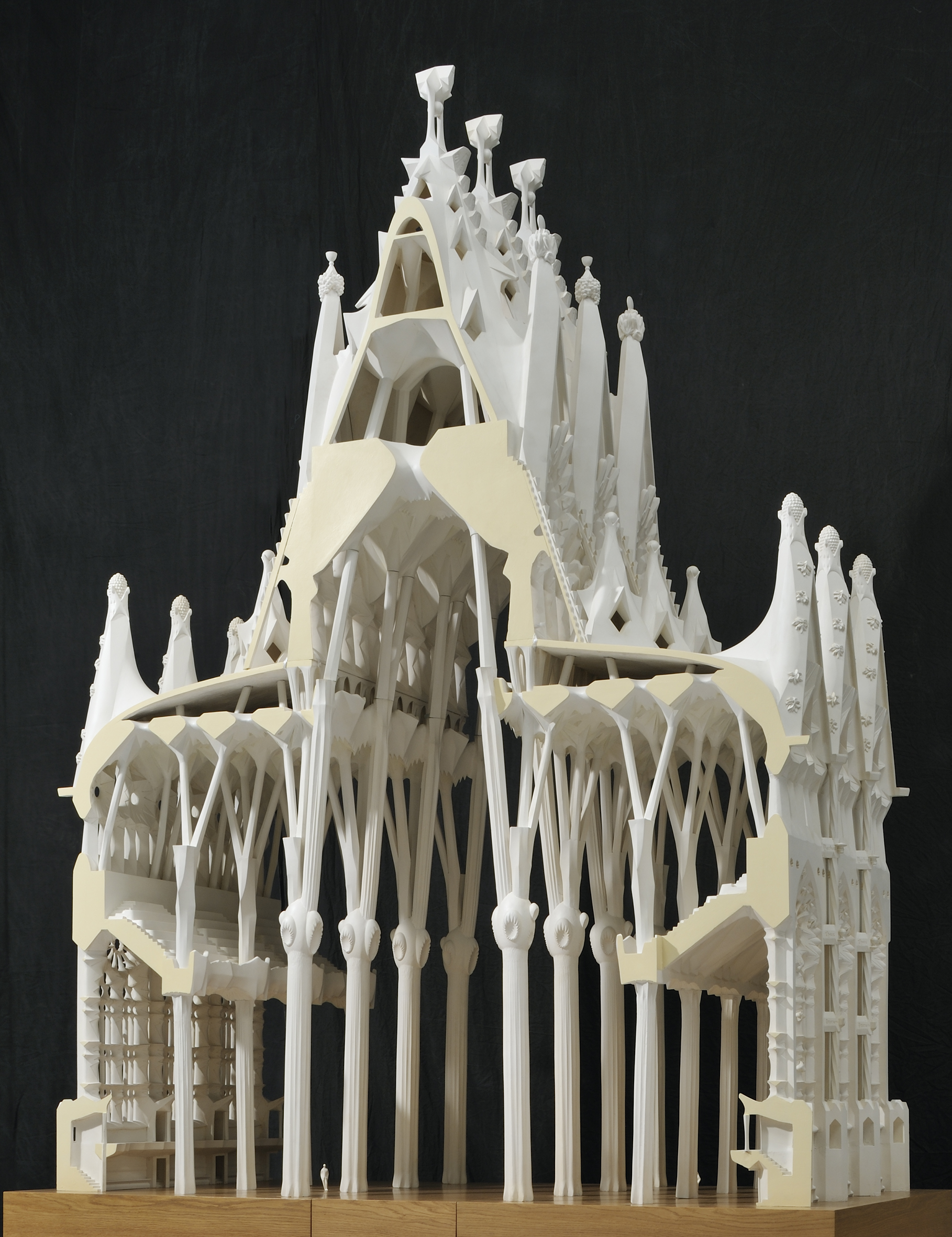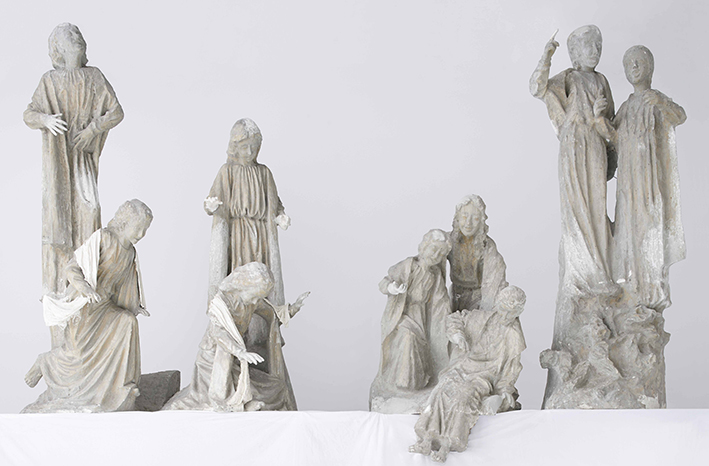GAUDí AND THE SAGRADA FAMíLIA
HAPPENINGText: Alma Reyes
The exhibition also explains how the revival of architecture in the 19th century revitalized historical periods — Neo-Greco, Neo-Roman, Neo-Gothic, Neo-Renaissance and Neo-Baroque — and triggered Gaudí to harmonize them into his own distinct trademark.

Gallery view of The Story of the Sagrada Família section, sculptural models of Nativity Facade, Photo: Alma Reyes
The third section finally captures The Story of the Sagrada Família, starting from José Maria Bocabella, a religious bookshop owner who, after being inspired by the Basilica of Loreto in Italy, planned to build a similar church upon his return to Spain in 1872. The exhibition unearths the stages of the church’s construction, interrupted by several lapses and difficulties due to insufficient funding and the arrival of wars. From Neo-Gothic elements (such as ogival windows and flying buttresses), some alterations transpired in the following years, such as parabolic arches and spiral cylinders.

Model of the naves of the Sagrada Família, 2001-02, Taller de modelistes de la Sagrada Família, Bunri University of Hospitality, Photo: Maki Goto
Gaudí inflated his vision of a temple of life and light by infusing Biblical representations both in the exterior and interior. Drawing plans in the exhibition affirm the overall layout of the church in the figure of a cross. The three grand facades — Nativity Façade, Passion Façade, and the Glory Façade — all bare religious symbols and a myriad of elements in nature — embedded lizards, birds, and ivy swirling on the facades, turtles supporting columns, and varied fruit motifs sculpted on the spires. Gaudí remarked, “Nothing is art if it doesn’t come from nature.” His obsession for nature grew from his childhood days in his family’s farmhouse where he learned to observe plants, rocks, trees and natural surroundings in minute detail.

Sotoo Etsuro, Model of the Singing Angels for the Nativity façade of the Sagrada Família, Installed on the Nativity Façade of the Sagrada Família from 1990 to 2000, Collection of the Artist, Photo courtesy of General Asahi Co.,Ltd.
Japanese sculptor Etsuro Sotoo, known worldwide for his outstanding works while living for more than 45 years in Spain, finished what Gaudí had started on the Nativity Facade, overlaid with natural elements. An elaborate photograph in the exhibition illustrates his design of the bronze and glass doors decorated with leaves, flowers , turtles, salamanders, pelicans, insects, and a huge tree of life surrounded by white marble doves.The image is said to represent the birth of Christ and, therefore, symbol of birth, life, and light. He sculpted gargoyles in the towers of the Evangelists, and also sculptures of angels, musicians, singers, children, as well as fruit baskets crowning the pinnacles of the basilica. Sotoo expressed that Sagrada Família “was the most fabulous pile of stones I had ever seen.”
Read more ...




